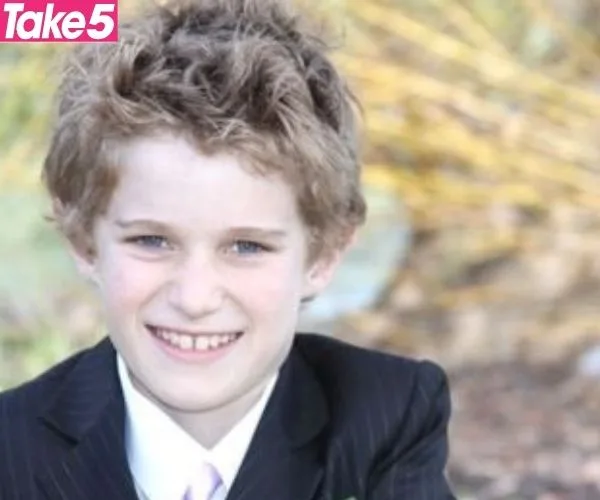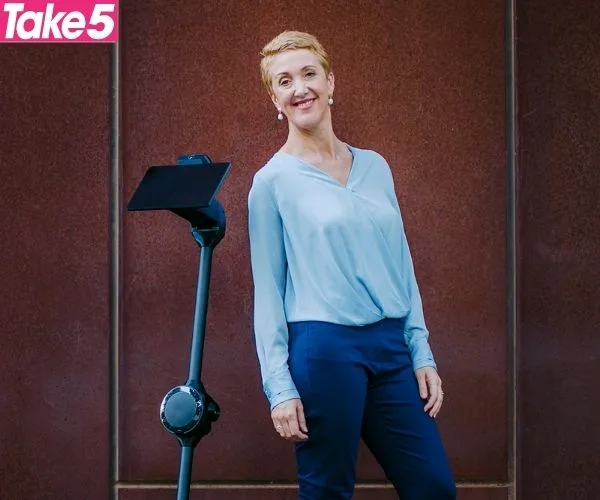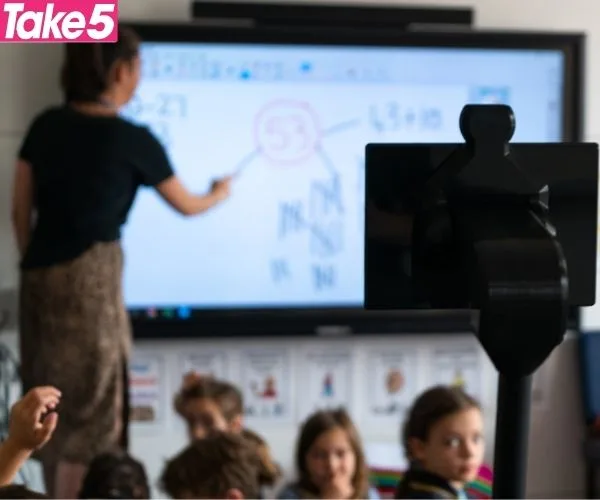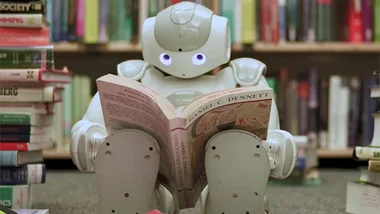Megan Gilmour, 51, from Canberra, ACT shares her emotional story:
My son Darcy, 10, crossed his arms against his chest.
“No more needles,” he huffed, his eyes brimming with tears.
Seeing him so upset broke my heart, but I had to be strong.
The needle would provide a blood transfusion and without it, Darcy’s life could be at risk.
Three months earlier, we’d gone on a family holiday to France to celebrate my marriage to the kids’ step-dad, Hugh.
Darcy and his sister, Mia, 13, were excited to be overseas, checking out the sites and tasting delicious food.
But during the trip, Darcy started having frequent nose bleeds.
Although it was odd, he seemed fine so I pushed it to the back of my mind.
Back home, I took him to the doctor for a blood test.
“His platelets are low,” the doc said, “let’s see where they sit in a week’s time.”
The next test revealed that they’d halved again, but the doctor wasn’t sure why.
It was heartbreaking not knowing what was wrong.
Over the next six months, we kept a close eye on Darcy.
At first, he didn’t seem affected by his platelet count dropping but slowly, as his haemoglobin levels declined, his energy dropped and he became breathless from any activity.
Doctors were doing everything they could, but they still didn’t have answers.
After a year of incessant treatments, Darcy underwent a bone marrow transplant.
They thought that could solve the problem, whatever it was.
“This could make you well,” I told Darcy, kissing his forehead before they prepped him for the procedure.
I was overcome with pride seeing how brave my 10-year-old boy was.

Darcy as a boy.
(Image: supplied)It looked like the procedure was a success.
We waited patiently for the results, but instead of getting better, Darcy only got sicker as more complications emerged and we had to move from our home in Canberra to Sydney for more treatment.
At first, Mia stayed with Hugh and her grandparents in Canberra, but then we all moved to Sydney.
“When can I see my friends?” Darcy asked me from his hospital bed.
“Soon, sweetie,” I’d reply.
But with a compromised immune system, it was too risky for Darcy to be at school with his mates.
At first, there was a lot of support but as the months passed, I watched as Darcy became withdrawn.
While he was still in protective isolation, his friends were getting on with their lives without him.
I could sense he was giving up.
“I can’t wait until you graduate Year Six and go to high school,” I’d tell him, trying to instil the thought of a positive future filled with friends and fun.
But deep down, I knew he didn’t see it for himself.
“I need to get him to school,” I lamented to Hugh, “without it, he’s giving up.”
“Let’s reach out to the teachers and see what they can do,” Hugh suggested.

With the Missing School robot.
(Image: Supplied)The next week, I contacted the school and asked what options we had to continue Darcy’s education and create more social connections.
Surprisingly, the school seemed to be saying that we should just wait until he’s well enough to attend.
I wondered if this had happened to thousands of kids around the country.
Thankfully, a year on from his transplant, Darcy miraculously started to get better.
“I can’t explain it,” the doc said, “but it’s great.”
Soon, Darcy was able to go back to school. It was wonderful to watch my happy, bright boy eventually become himself again.
One day, I had a cuppa with my friends, Cathy and Gina, who’d had sick kids, too.
“There’s got to be a way to keep them in the classroom socialising with their mates, even if they can’t physically be there,” Gina said.
We came up with the idea of a charity called Missing School, an organisation that recognises the importance of having kids in school for both education and their mental wellbeing, no matter what might be keeping them physically away.
We got to work doing research and applying for charity grants.
We discovered that over 60,000 students were missing school often or completely because of injury or chronic illness.
Thinking back to Darcy’s struggles, I knew we had to do something.
“What if there was some sort of robot the child could control?” I wondered. “That way, the children could go out to lunch with the other kids, instead of only being able to listen to the lessons.”
Incredibly, there was!

The Missing School robot in the classroom.
(Image: supplied)The robot on wheels works by using tablet technology on a stand.
It literally fills in for the child, who can control it from their home or a hospital bed.
It allows them to interact and move around, rather than relying on limited programs like Skype.
I developed my pitch, chatting to anyone who would listen and eventually, I was given the St George Foundation Inspire Grant and launched a national pilot program.
These days, Darcy is a healthy and happy 20-year-old.
Thankfully, he doesn’t remember a lot of the medical stuff and I’m so proud of what he’s achieved.
Everything I’ve fought for came from a mother’s pure love that now extends to all children.
It’s a great injustice for kids to miss out, and I will keep fighting until all of them have the chance to learn and live to the fullest no matter what life throws at them.
All children should be seen and heard.
If you’d like to support Megan and Missing School, head to www.missingschool.org.au
-copy.jpg?fit=900%2C751)

